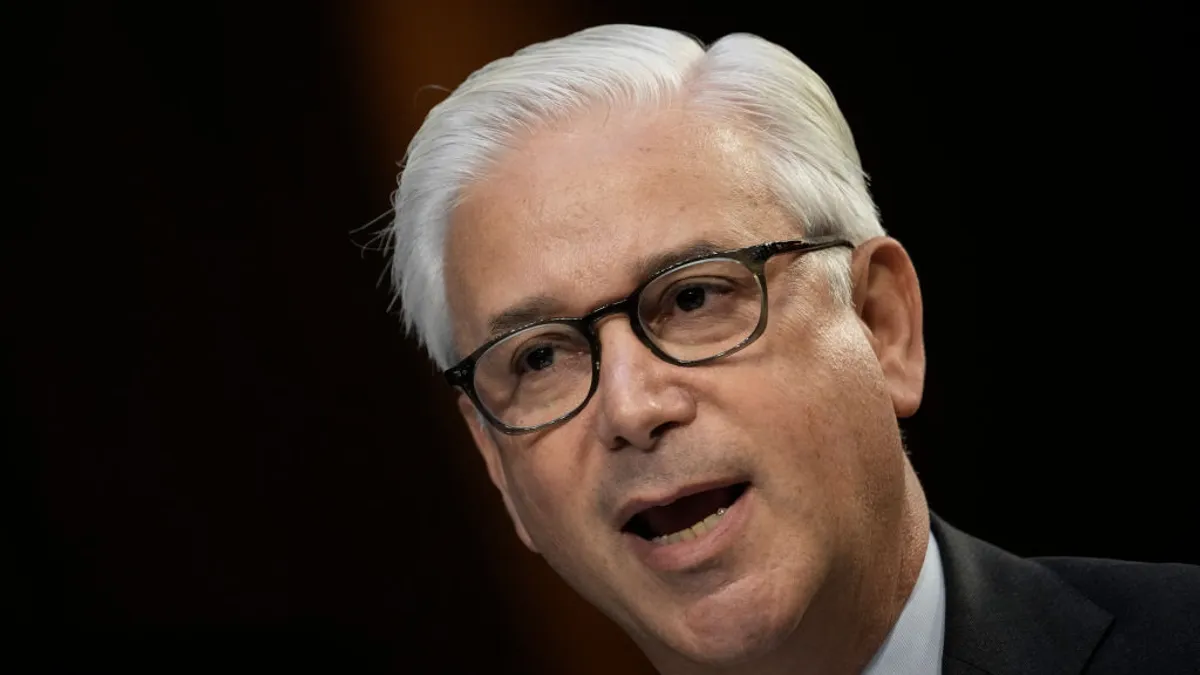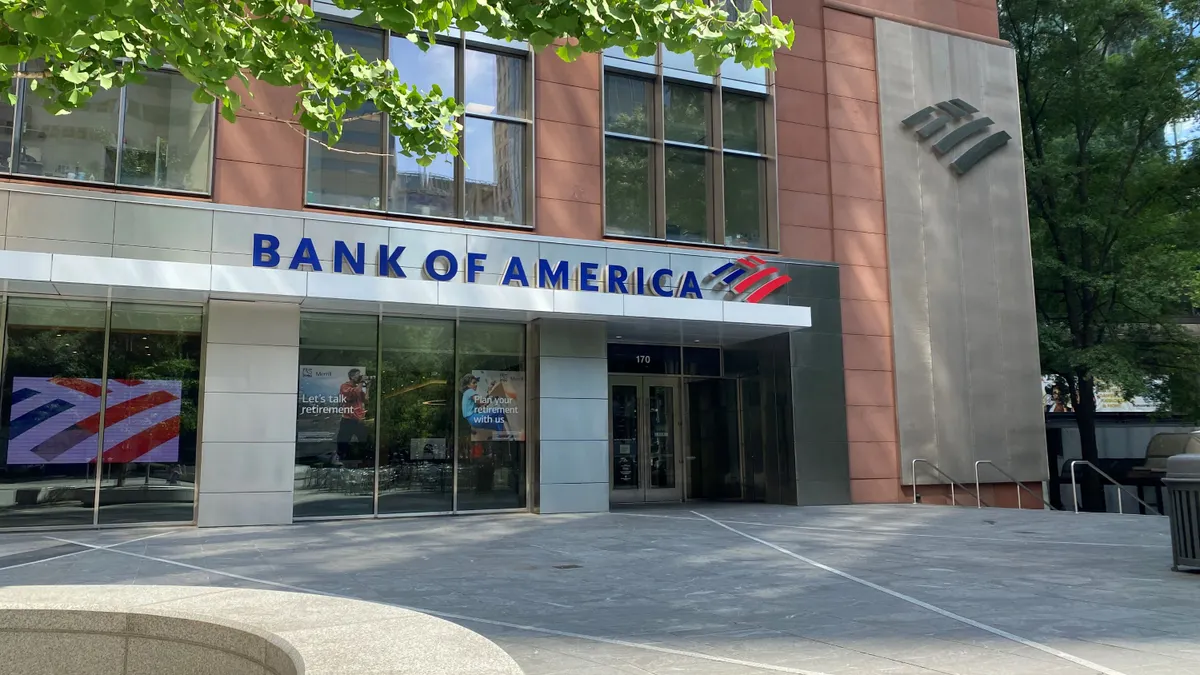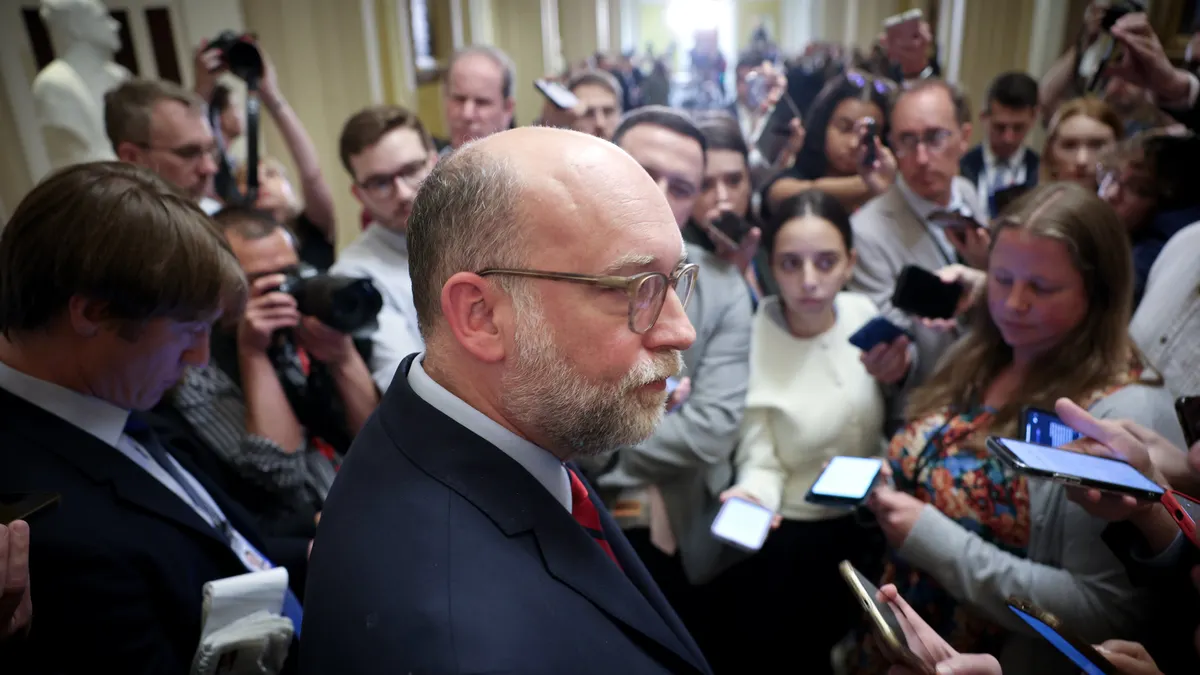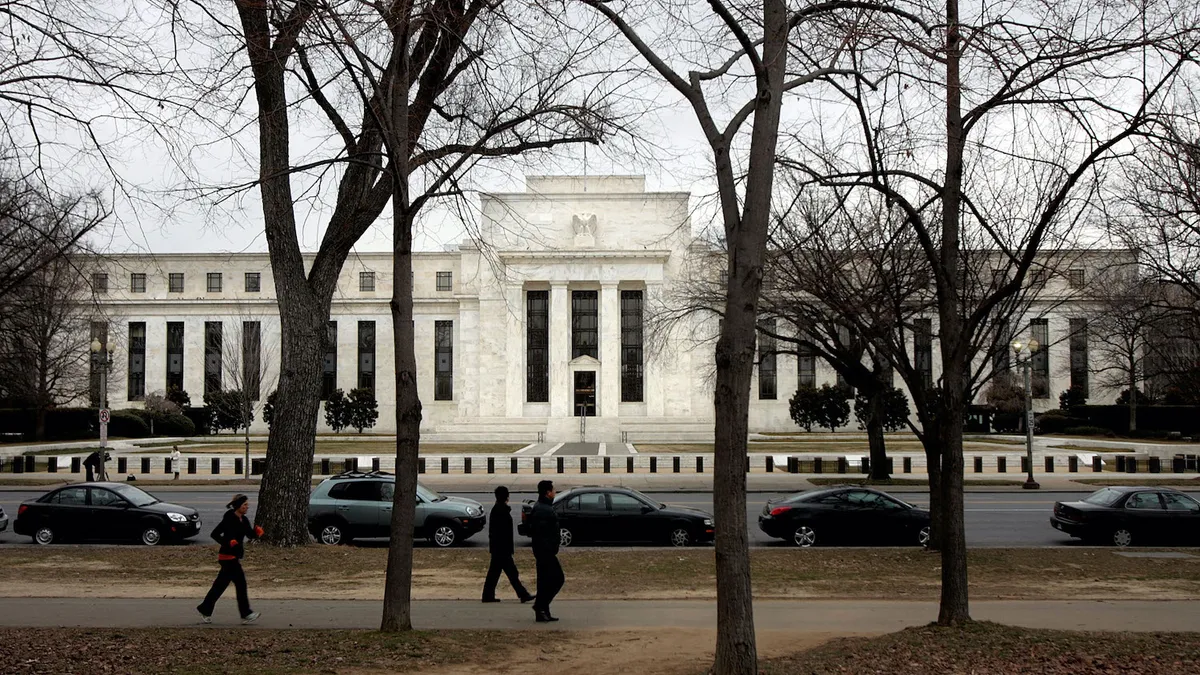Sen. Elizabeth Warren, D-MA, and 10 other Democratic lawmakers asked regulators at three agencies for “more rigorous data and analysis” to help justify a proposed reduction in the enhanced supplementary leverage ratio, a measure of how much capital banks must hold relative to their assets.
“Changes to such a significant pillar of the post-Global Financial Crisis bank regulatory framework should be accompanied by robust economic impact analyses, as well as a clear explanation of the rationale behind such changes for our constituents,” the senators wrote to Federal Reserve Vice Chair for Supervision Michelle Bowman, Comptroller of the Currency Jonathan Gould and Federal Deposit Insurance Corp. Acting Chair Travis Hill, in a letter made public Monday.
The proposal would reduce the eSLR requirement to between 3.5% and 4.5% for bank holding companies and their depository institution subsidiaries. That’s down from 5% for the former and 6% for the latter. But across U.S.-based global systemically important banks in total, it would drive capital levels down more than $200 billion, according to the proposal.
The senators counter, though, that that doesn’t mean the excess capital will translate to more lending. Rather, “megabanks appear motivated by the short-term benefits of capital deregulation for shareholders and executives: increased dividends, buybacks and bonuses,” Warren wrote to Bowman in June.
The senators pivoted Monday, saying banks – by regulators’ own account – could shift more resources toward capital markets trading activities and away from lending. The senators cited a July column in the Financial Times by former FDIC Chair Sheila Bair, indicating that every dollar that GSIBs shift out of their banks to other parts of the organization could reduce lending capacity by roughly $12.50. Based on the $200 billion figure, GSIB lending capacity could be cut by up to $2.7 trillion, the senators asserted.
The senators are asking the agencies to quantify the increase in risk of a GSIB failure from the reduced eSLR proposal – along with the potential impact to the Deposit Insurance Fund. Further, agencies should quantify the impact of the proposal on the competitiveness of community and midsize banks, the senators wrote.
In the letter, Warren and the other Democrats cited Bowman’s own challenge to her fellow regulators, from a speech in October 2023 – namely, that “policymakers should be expected to show their work.”
That, at the time, may have been a reference to the Fed’s own proposal to increase capital requirements for GSIBs by 19% to align more closely with the Basel III endgame.
In that sense, Monday’s eSLR letter somewhat reflects backlash from Republican lawmakers against that ultimately ill-fated 2023 capital-requirements proposal.
“As issued, the proposal lacks justification, lacks rigorous quantitative analysis, and is procedurally flawed,” then-Rep. Patrick McHenry, R-NC, and 28 House lawmakers wrote in March 2024 to the leaders of the Fed, FDIC and OCC.
Warren and fellow Democrats on Monday said “the economic costs of rushing through this type of proposal, and potentially getting it wrong, could be severe, and would be borne by American taxpayers, small businesses, and low- and middle-income households across the country.”
In addition to more data, the senators asked regulators to extend by 90 days the comment deadline for the proposal. And, again, they cited Bowman’s comments, circa 2023, in their argument.
“Agency rulemaking is more credible and effective when it is conducted in an open and collaborative manner with sufficient time to provide comment,” the senators wrote, quoting Bowman’s remarks on a long-term debt proposal.
The senators also noted that a 2023 proposal on risk-weighted capital requirements for big banks came with a 126-day comment period – which the agencies extended to 173 after requests from the banking industry.
“The current 60-day comment period [for the eSLR proposal] is inconsistent with past practice for a proposal of this magnitude,” the senators wrote Monday.
They’re asking Bowman, Gould and Hill for answers, by Sept. 2, as to how the eSLR proposal will affect the Treasuries market, the housing market and the DIF – especially for smaller banks – in the event a GSIB fails.
They’re also asking how the eSLR proposal would interact with other proposals that they argue are generally loosening regulations, including changes to the stress capital buffer, GSIB surcharge, stress testing framework and supervisory ratings.
Further, the senators are asking for updated figures. The proposed eSLR reduction is based on GSIBs’ 2024 risk-weighted capital requirements, they noted, asking how those numbers have changed in light of 2025 risk-weighted capital requirements.



















